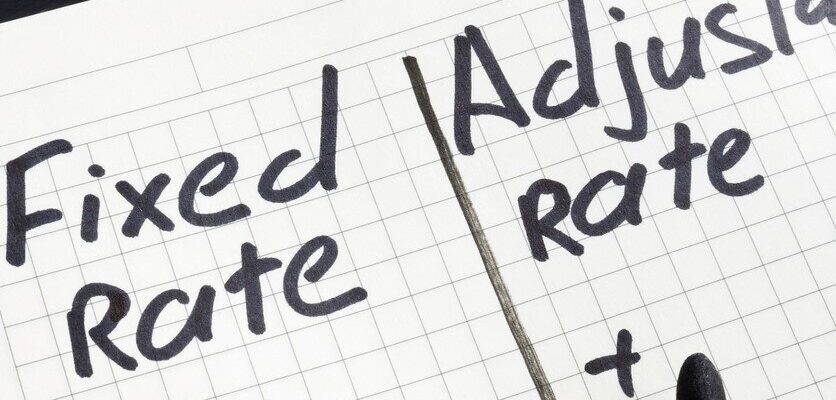We specialize in making the home purchase process a great experience! We will help you determine which mortgage is right for you.
Your choice of mortgage primarily boils down to two options, fixed-rate and adjustable-rate mortgages. If you’re looking for a mortgage, it’s important that you understand the difference between the two to make a more informed decision.
This article will look at what makes fixed-rate and adjustable-rate mortgages different. Hopefully, after reading this, you’ll have a firm understanding of both and a clear idea of what type of mortgage is right for you.
What Is a Fixed-Rate Mortgage?
As the name connotes, a fixed-rate mortgage is a home loan with a fixed interest rate throughout its life. This means that the interest rate remains the same regardless of market fluctuations and other factors that would otherwise affect the interest rate.
A fixed interest rate makes budgeting easier for homeowners because the repayable amount remains the same. Plus, they can opt for standardized monthly payments to make the mortgage repayment a breeze.
What Is an Adjustable-Rate Mortgage(ARM)?
An adjustable-rate, or variable-rate mortgage, is a home loan with an interest rate that changes depending on market conditions. Adjustable-rate home loans have an initial interest rate lower than that of fixed-rate loans. This initial interest rate remains steady for a particular period then resets once the period elapses. The fixed period varies from one month to ten years. After the reset, the mortgage gets a new interest rate that depends on the current market conditions. The interest rate remains the same until the next reset, where it changes again.
Common Terms With Adjustable-Rate Mortgages
ARMs are more complex than fixed-rate mortgages. To have a firm understanding of ARMs, you’ll need to get familiar with a few terms, including:
- Adjustment frequency: This defines the period between resets or interest rates adjustments.
- Adjustment indexes: This is a benchmark tied to a mortgage interest rate. It could be a specific market index, an asset, or even CDs.
- Ceiling: This limits how high the interest rate can climb throughout the given loan period.
- Cap: The cap is a limit on what percentage the interest rate can increase between resets.
Which Mortgage Is Right for You?
The biggest hurdle for most soon-to-be homeowners is figuring out which type of mortgage works best for them. You’ll have to consider your current and future financial situation, the general economic atmosphere, and your preferred lender to make the right choice.
Before picking a mortgage type, ask yourself the following questions:
- Whether you can afford the maximum interest rate of an ARM?
- What’s the largest mortgage amount you can comfortably afford?
- Does the future look promising or bleak, given your current financial situation?
Remember, you can always seek advice from a financial advisor or mortgage expert to ensure you make the right decision.
Pick the Right Mortgage Type
Take your time and choose the right mortgage type to finance your home. Apart from the mortgage type, ensure you find a reputable, reliable, and trustworthy lender for your mortgage. Luckily, one such lender is just a call or email away; contact Better Rate Mortgage so we can get started on your mortgage.


